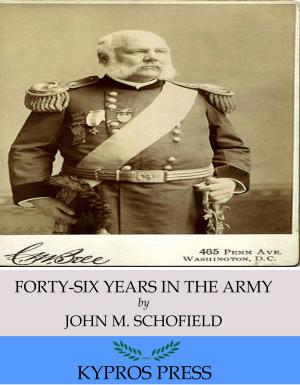Seminal Moments of the 20th Century: Pearl Harbor, D-Day, the Assassination of John F. Kennedy, the Space Race, and the Civil Rights Movement
Nonfiction, History, Civilization, Modern, 20th Century| Author: | Charles River Editors | ISBN: | 9781475321258 |
| Publisher: | Charles River Editors | Publication: | January 15, 2013 |
| Imprint: | Language: | English |
| Author: | Charles River Editors |
| ISBN: | 9781475321258 |
| Publisher: | Charles River Editors |
| Publication: | January 15, 2013 |
| Imprint: | |
| Language: | English |
*Includes pictures of important people, places, and events.*Includes Bibliographies for further reading.*Includes a Table of Contents. The 20th century was a tumultuous century that saw technology take man from the ground to the Moon and make war possible on a global scale. It also produced 2 of the most shocking events in American history, the surprise attack on Pearl Harbor and the assassination of JFK, two flashpoints that everyone remembers hearing about. During World War II, the free world hung in the balance as the totalitarian Axis powers sought to usher in a new world order, and two key turning points helped bring America into the war and ultimately win it. All Americans are familiar with the day that will live in infamy. At 9:30 a.m. on Sunday, December 7, 1941, Pearl Harbor, the advanced base of the United States Navys Pacific Fleet, was ablaze. It had been smashed by aircraft launched by the carriers of the Imperial Japanese Navy. All eight battleships had been sunk or badly damaged, 350 aircraft had been knocked out, and over 2,000 Americans lay dead. Indelible images of the USS Arizona exploding and the USS Oklahoma capsizing and floating upside down have been ingrained in the American conscience ever since. It would be Americans who bore the brunt on June 6, 1944. On D-Day, the Allies commenced the liberation of Europe by staging the largest and most complex amphibious invasion in human history. The complex operation would require tightly coordinated naval and air bombardment, paratroopers, and even inflatable tanks that would be able to fire on fortifications from the coastline, all while landing over 150,000 men across nearly 70 miles of French beaches. November 22, 1963 started as a typical Friday, and many Americans were unaware that President Kennedy was even heading to Dallas, Texas. A public parade was hosted for the President and First Lady that afternoon, during which the most controversial assassination in American history. The indelible images provided by the Zapruder film of Kennedy being hit in the throat and head, followed by Jackie crawling over the backseat toward the trunk, are now instantly recognizable. Today the Space Race is widely viewed poignantly and fondly as a race to the Moon that culminated with Apollo 11 winning the Race for the United States. In fact, it encompassed a much broader range of competition between the Soviet Union and the United States that affected everything from military technology to successfully launching satellites that could land on Mars or orbit other planets in the Solar System. Today every American is taught about watershed moments in the history of minorities struggles for civil rights over the course of American history: the Civil War, Brown v. Board of Education, Rosa Parks refusal to give up her seat, Dr. Martin Luther King Jr.s I Have a Dream speech, and the passage of the Civil Rights Act of 1964. Indeed, the use of the phrase Civil Rights Movement in America today almost invariably refers to the period of time from 1954-1964.However, the American Civil Rights Movement actually came into existence long before it is presumed to have done so. The Movement's primary work was slow, evolving, gradual and long-term. The Civil Rights Movement also included counternarratives led by activists like Malcolm X, who pointed out that Brown v. Board may have demanded integration, but it did not implement it. Insisting that politely asking the government for civil rights was futile, Malcolm X represented the face of the civil rights movement that demanded stronger words and action than nonviolent protest.
*Includes pictures of important people, places, and events.*Includes Bibliographies for further reading.*Includes a Table of Contents. The 20th century was a tumultuous century that saw technology take man from the ground to the Moon and make war possible on a global scale. It also produced 2 of the most shocking events in American history, the surprise attack on Pearl Harbor and the assassination of JFK, two flashpoints that everyone remembers hearing about. During World War II, the free world hung in the balance as the totalitarian Axis powers sought to usher in a new world order, and two key turning points helped bring America into the war and ultimately win it. All Americans are familiar with the day that will live in infamy. At 9:30 a.m. on Sunday, December 7, 1941, Pearl Harbor, the advanced base of the United States Navys Pacific Fleet, was ablaze. It had been smashed by aircraft launched by the carriers of the Imperial Japanese Navy. All eight battleships had been sunk or badly damaged, 350 aircraft had been knocked out, and over 2,000 Americans lay dead. Indelible images of the USS Arizona exploding and the USS Oklahoma capsizing and floating upside down have been ingrained in the American conscience ever since. It would be Americans who bore the brunt on June 6, 1944. On D-Day, the Allies commenced the liberation of Europe by staging the largest and most complex amphibious invasion in human history. The complex operation would require tightly coordinated naval and air bombardment, paratroopers, and even inflatable tanks that would be able to fire on fortifications from the coastline, all while landing over 150,000 men across nearly 70 miles of French beaches. November 22, 1963 started as a typical Friday, and many Americans were unaware that President Kennedy was even heading to Dallas, Texas. A public parade was hosted for the President and First Lady that afternoon, during which the most controversial assassination in American history. The indelible images provided by the Zapruder film of Kennedy being hit in the throat and head, followed by Jackie crawling over the backseat toward the trunk, are now instantly recognizable. Today the Space Race is widely viewed poignantly and fondly as a race to the Moon that culminated with Apollo 11 winning the Race for the United States. In fact, it encompassed a much broader range of competition between the Soviet Union and the United States that affected everything from military technology to successfully launching satellites that could land on Mars or orbit other planets in the Solar System. Today every American is taught about watershed moments in the history of minorities struggles for civil rights over the course of American history: the Civil War, Brown v. Board of Education, Rosa Parks refusal to give up her seat, Dr. Martin Luther King Jr.s I Have a Dream speech, and the passage of the Civil Rights Act of 1964. Indeed, the use of the phrase Civil Rights Movement in America today almost invariably refers to the period of time from 1954-1964.However, the American Civil Rights Movement actually came into existence long before it is presumed to have done so. The Movement's primary work was slow, evolving, gradual and long-term. The Civil Rights Movement also included counternarratives led by activists like Malcolm X, who pointed out that Brown v. Board may have demanded integration, but it did not implement it. Insisting that politely asking the government for civil rights was futile, Malcolm X represented the face of the civil rights movement that demanded stronger words and action than nonviolent protest.















